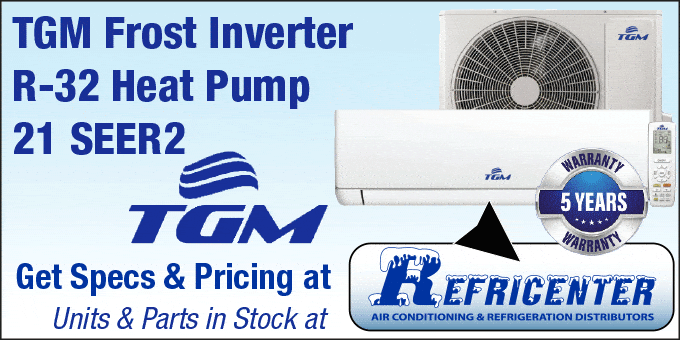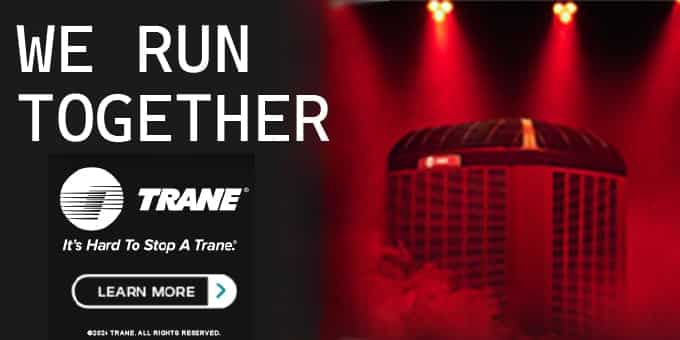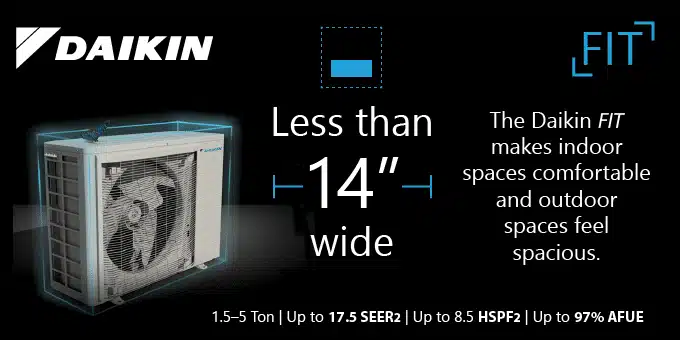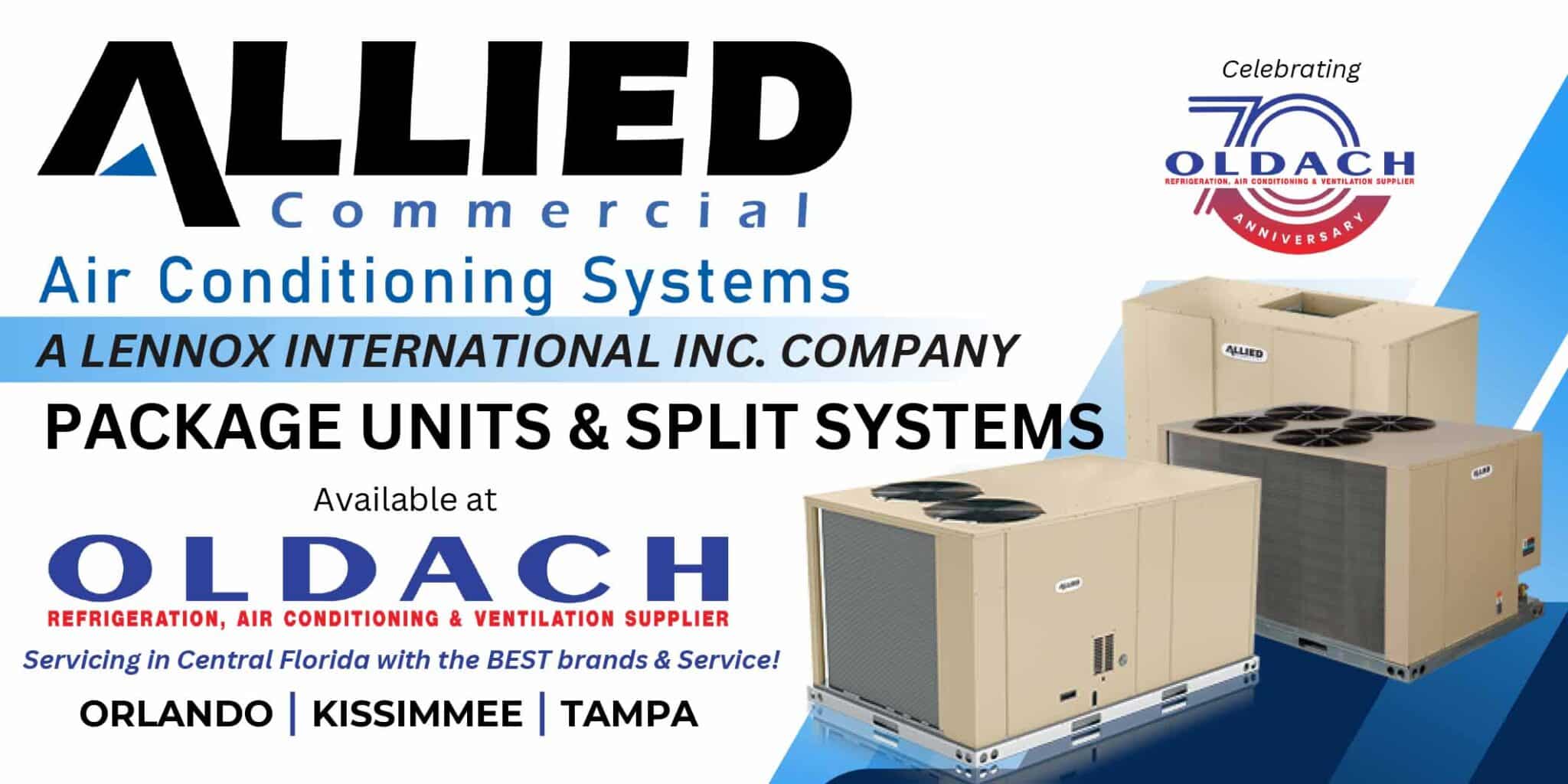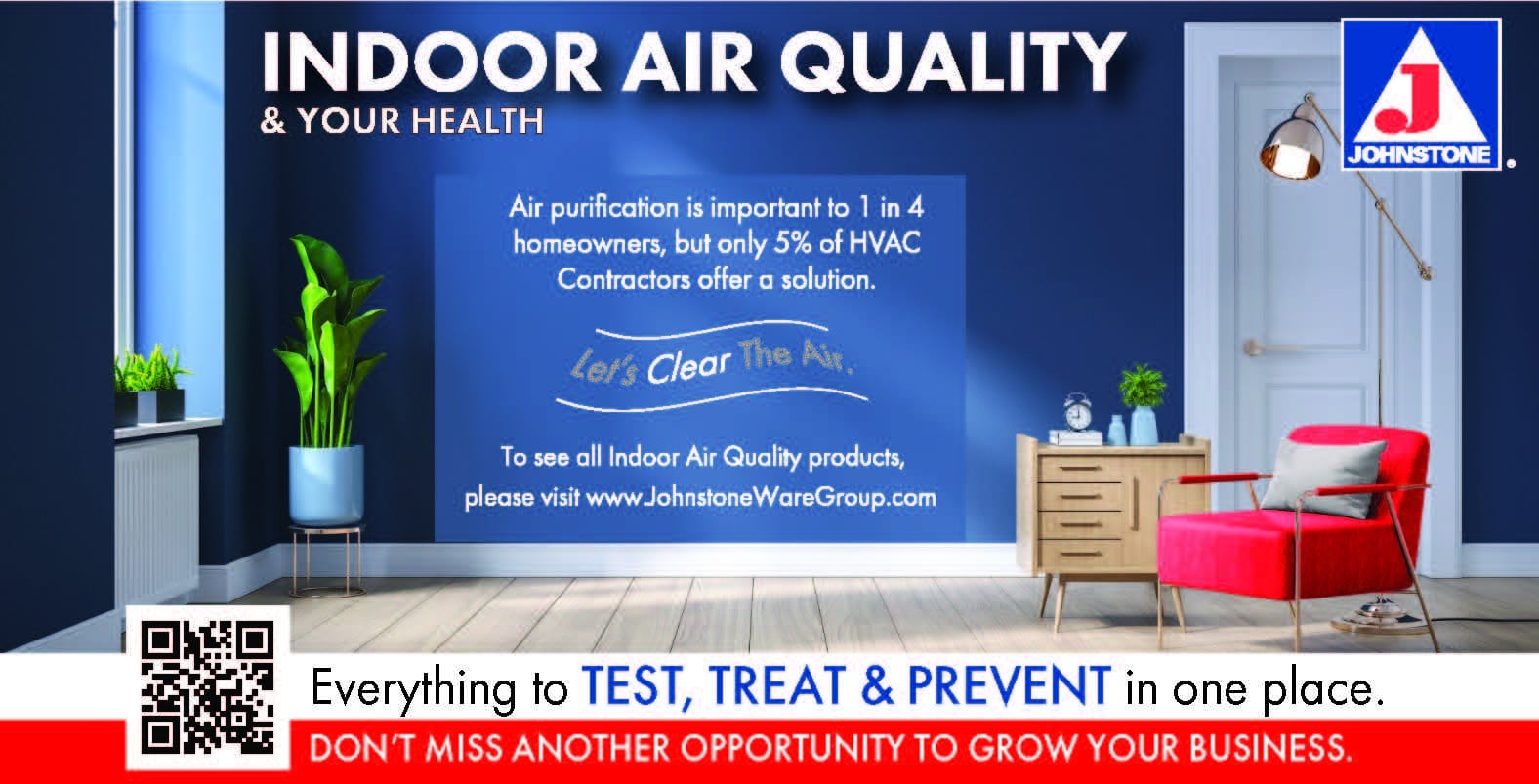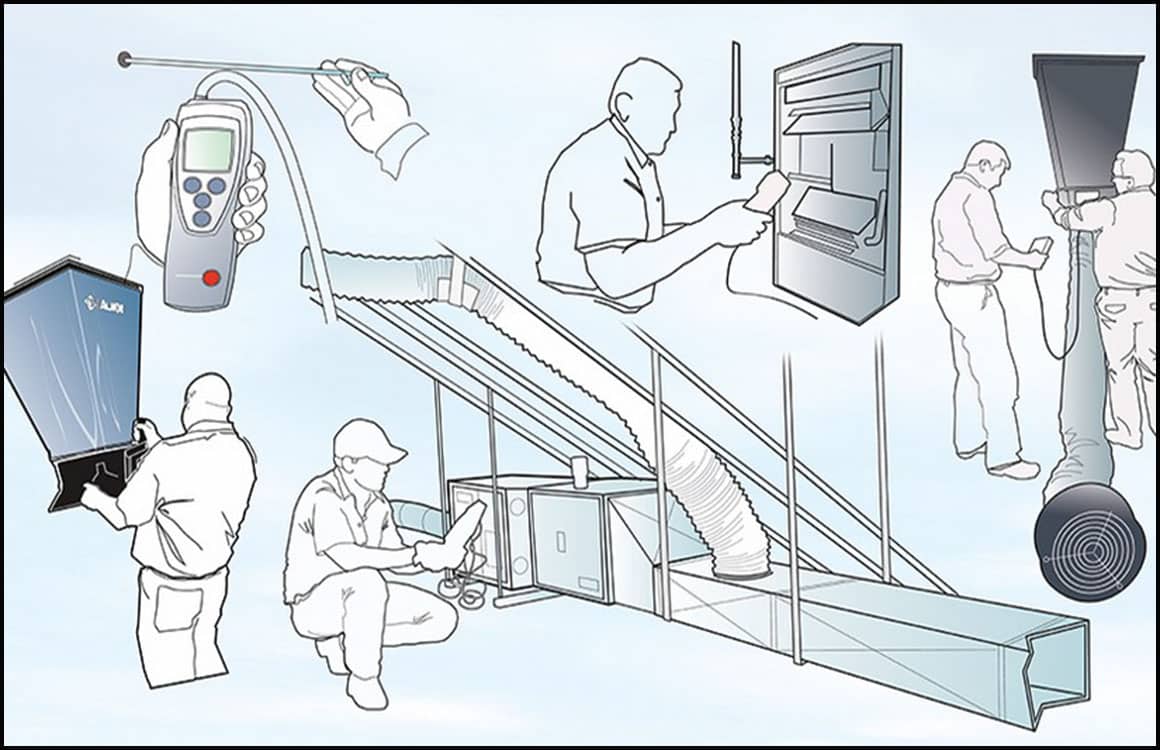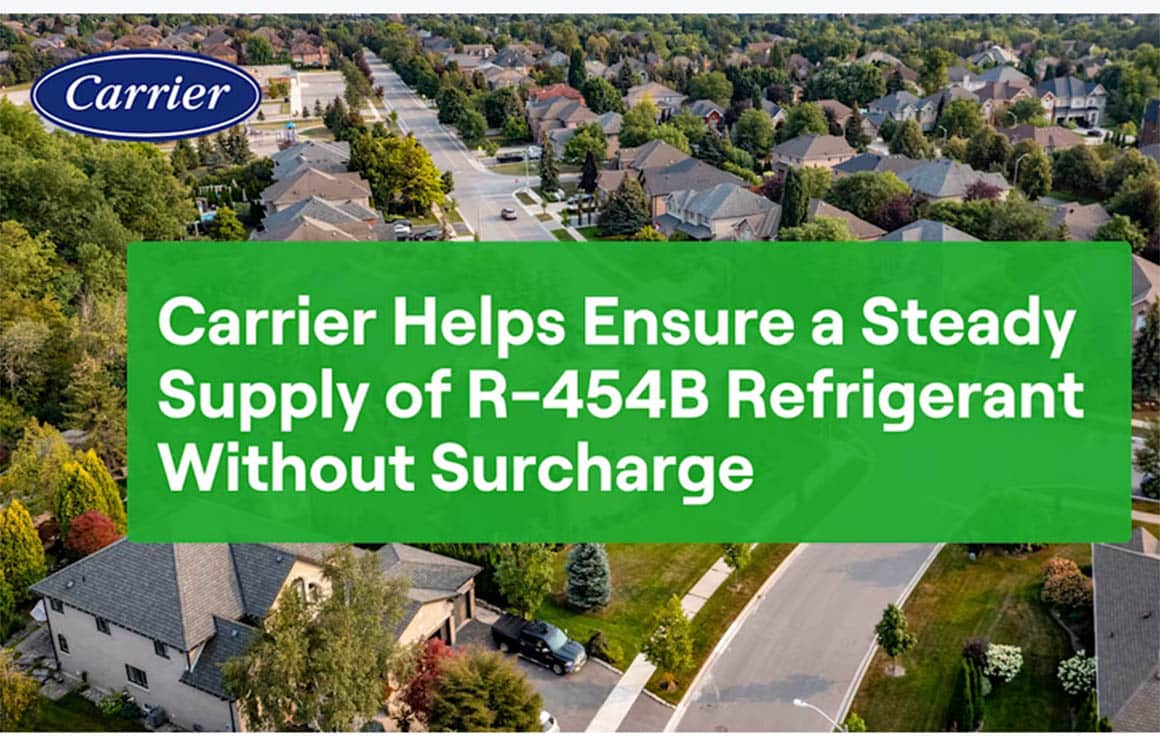Important air quality information for employers and workers.
Introduction
While the primary method of COVID-19 transmission is in droplet form—i.e., person-to-person or via surfaces, researchers are still studying the virus, given its relatively brief stint thus far on the world stage. To date, the American Society of Heating, Refrigerating, and Air Conditioning Engineers (ASHRAE) has asserted that, “Transmission of SARS-CoV-2 through the air is sufficiently likely that airborne exposure to the virus should be controlled.”
So, while hand-washing with warm water and plenty of soap, along with and surface-sanitizing and avoidance of close person-to-person contact are still the main methods to stay healthy, there are several other steps that building engineers can take to significantly minimize the risk of transmission.
What that Means for Commercial Buildings
As businesses, corporations, associations, and other entities prepare to have their employees return to offices spaces, building owners, operators, and engineers need reliable information on steps they can take to help make the commercial spaces they control as safe and welcoming as possible. A large part of that effort will involve a building’s heating, ventilation, air conditioning (HVAC), and water heating infrastructure. America’s HVAC equipment manufacturers are committed to providing the technologies that can make all public buildings as safe and health-affirming as they can be.
A Healthier Commercial Building Begins with a Qualified Contractor
A Healthier Commercial Building Begins with a Qualified Contractor A well-designed, modern HVAC system, properly installed and maintained, will ensure comfort and productivity while ensuring and enhancing health and safety. Each system component is designed to work in concert with the others to optimize all those attributes. In the current situation, where health and safety must be emphasized, there are several technologies that should be employed to accomplish those objectives.
According to ASHRAE, building officials should consider retaining the services of a qualified design professional, a certified commissioning provider (CxP), or a certified testing, adjusting and balancing (TAB) service provider especially for larger, more complex HVAC systems, such as those found in commercial spaces or for systems serving critical spaces within buildings. Furthermore, officials should seek contractors that employ technicians certified by North American Technician Excellence (NATE) to have been highly trained, tested, and found proficient in one or more of eleven HVACR-related specialties. Such contractors can be found at www.natex.org.
Ventilation is Key
There has been considerable media coverage of a limited study conducted in China last April in which it was alleged that restaurant patrons had contracted COVID-19 through airborne transmission due to a wall-mounted air conditioning unit. Leaving aside whether the study’s findings were correct, with respect to the air conditioner in question (there were several other possible contamination routes), its main drawback was lack of ventilation. This particular unit did not provide any outdoor air at all, but instead recirculated the air within the restaurant.
Although it might seem counterintuitive to increase the flow of air that could be moving viral particles around, moving more air and providing more outdoor air is beneficial because of pathogen dispersal. In fact, the CDC’s Interim Guidance for Businesses and Employers to Plan and Respond to Coronavirus Disease (COVID-19) specifically advises to “Increase ventilation rates” and “Increase percentage of outdoor air.” Furthermore, ASHRAE’s Building Readiness Guidelines also recommends that building engineers “…increase their system’s outdoor air ventilation to reduce the recirculation air back to the space. The guidance indicates that this must be done as much as the system and or space conditions will allow.” The guidance also cautions that, “It is very important that these overall building systems are evaluated by a qualified TAB firm, Cx provider, or design professional to ensure that the modifications for pandemic safety do not create additional issues.”
The head of Harvard University’s Healthy Buildings Program, Dr. Joseph Allen, stressed the importance of adequate outside air in a May Washington Post Op-Ed in which he stated, “we must deploy healthy building strategies, such as refreshing stale indoor air. We do this by opening windows in our homes and cars and by increasing the outdoor air ventilation rate in buildings with HVAC systems. Any recirculated air needs to pass through a high-efficiency filter so an infected person in one room doesn’t contaminate people in an adjacent room….”
Which brings us to the next recommendation:
Filtration is a Must
Building engineers are encouraged to improve the efficiency of the filters serving their HVAC systems within the guidance provided for most of the building types listed on the ASHRAE COVID-19 Preparedness Resources website. Mechanical filters are the most common types of filters found in HVAC systems. The term used to describe mechanical filter efficiency is MERV, which is an acronym for Minimum Efficiency Reporting Value. The higher the MERV number, the better the ability of a filter to remove particles from the air.
ASHRAE recommends that mechanical filter efficiency be at least MERV 13 and preferably MERV 14 or better to help mitigate the transmission of infectious aerosols. Many existing HVAC systems were designed and installed to operate using MERV 6 to MERV 8 filters. While MERV 13 and greater filters are better at removing particles in the 0.3 micron to 1 micron diameter size (the size of many virus particles) the higher efficiency does not come without a penalty. Higher efficiency filters require greater air pressures to drive or force air through the filter.
Care must be taken when increasing the filter efficiency in an HVAC system to verify that the capacity of the HVAC system is sufficient to accommodate the better filters without adversely affecting the system’s ability to maintain the building’s required indoor temperature and humidity conditions and space pressure relationships.
A qualified HVAC technician has the tools to determine the maximum possible MERV filter for an individual system.
UV Light Treatment Should be Considered
In a May 7 New York Times article, researchers discussed the use of ultraviolet light in combating infectious pathogens. “We have struggled in the past to see this highly effective, very safe technology fully implemented for airborne infections,” said Dr. Edward A. Nardell, a professor of global health and social medicine at Harvard Medical School. “We’ve done the studies. We know it works.”
The article notes that UV light “mangles the genetic material in pathogens — DNA in bacteria and fungi, RNA in viruses — preventing them from reproducing.” “You’ve killed it essentially,” said William P. Bahnfleth, a professor of architectural engineering at Pennsylvania State University and the head of ASHRAE’s Epidemic Task Force.
A study conducted by Hiroshima University, published in the September 2020 issue of the American Journal of Infection Control, found that using Ultraviolet C light with a wavelength of 222 nanometers, which is safer to use around humans, effectively kills SARS-CoV-2 — the first research in the world to prove its efficacy against the virus that causes COVID-19. Other studies have shown effectiveness against other coronavirus strains, but not specifically COVID-19.
As noted above, UV light treatment can be used as a supplement to filtration, killing pathogens that escape. Daniel Jones, president of UV Resources, a UV light treatment equipment company, touted upper-air UV-C fixtures as a commercial building remedy for viral droplets: Airborne droplets containing infectious agents can remain in room air for six minutes and longer,” he said. “Scientists have found that COVID-19 can remain infectious on surfaces at room temperature for up to nine days. Upper-air UV-C fixtures can destroy those microbes when they are exposed to the UV-C energy in a matter of seconds.” He pointed to kill ratios of up to 99.9 percent on a first-pass basis that have been modeled, and concentrations are further reduced each time the air circulates.
Humidity Control is Also Important
Viruses are least viable in buildings with humidity between 40- and 60-percent. Buildings in cooler climates are susceptible to humidity levels lower than optimal, making humidifiers a necessity. ASHRAE’s Building Readiness Guidelines clearly state that, “…research indicates that maintaining the space relative humidity between 40% and 60% decreases the bio-burden of infectious particles in the space and decreases the infectivity of many viruses in the air. The [engineering] team should consider adjusting the space comfort setpoints to increase the system’s ability to use more outside air.
The Bottom Line
A top priority should be a building assessment, through which qualified technicians determine a) appropriate air flows, and b) if spaces within the building (offices, common areas, meeting rooms, etc.) are achieving those air flows.
It should be well understood that a healthy building, whether a school, office building, public space, or even a home involves tradeoffs of energy use, comfort, and safety. Some of the remedies advocated above can increase energy usage, but with health being a top priority, particularly in the time of pandemic, most will find that the resulting increase in comfort and safety necessary and worthwhile.
A properly installed, properly maintained system, with adequate ventilation using outside air, proper filtration, and appropriate humidity control – all of which are accomplished through readily available technologies — can go a long way toward mitigating potential viral spread.
Reprinted with permission from https://www.ahrinet.org/scholarships-education/iaq
May 29, 2023



